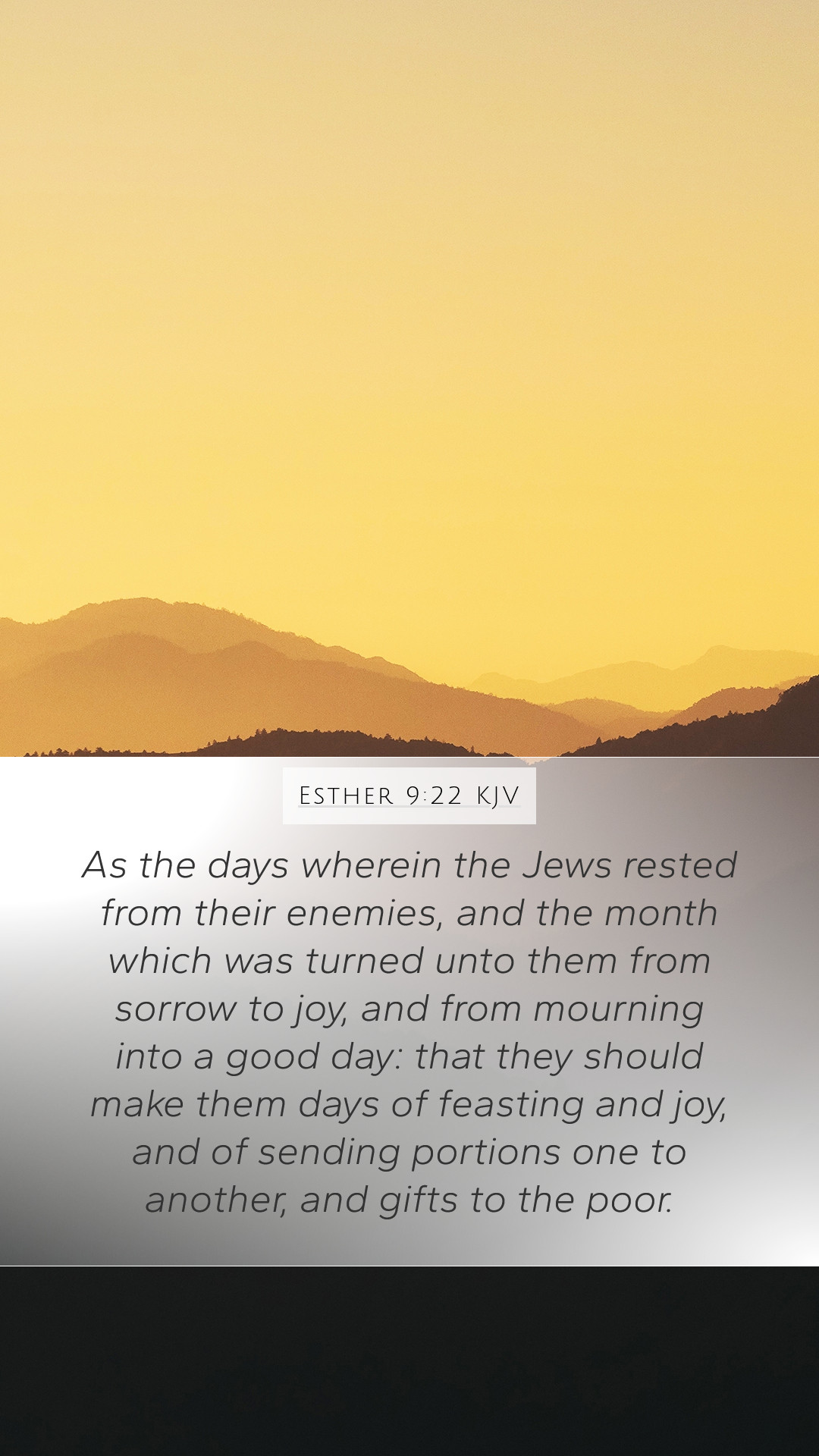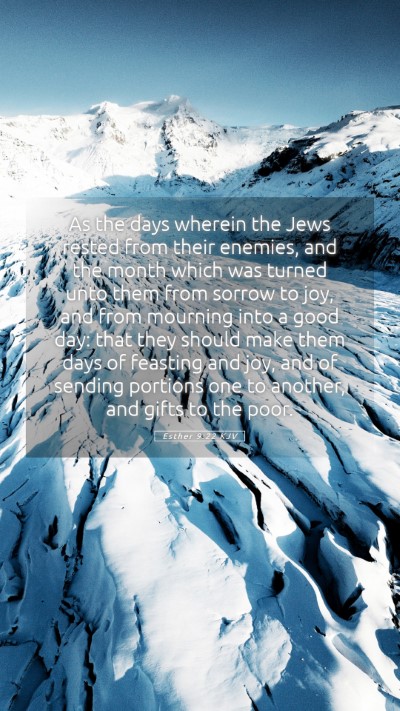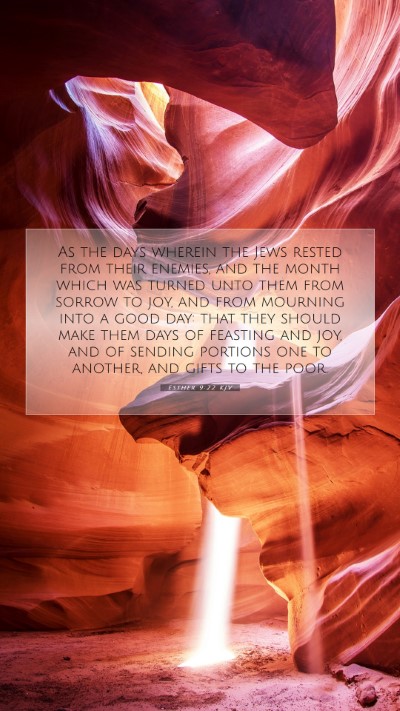Bible Verse Explanations: Esther 9:22
Esther 9:22 states: “As the days wherein the Jews rested from their enemies, and the month which was turned unto them from sorrow to joy, and from mourning into a good day: that they should make them days of feasting and joy, and of sending portions one to another, and gifts to the poor.” This verse communicates the establishment of the festival of Purim, which commemorates the deliverance of the Jews from {Haman's} plot.
Understanding Esther 9:22
This verse is rich in its meaning and significance within the narrative of Esther, illustrating the transformation from peril to peace. Let's explore some interpretations and commentaries that help elucidate this passage:
Meaning and Implications
-
Transformation from Sorrow to Joy
According to Matthew Henry, this verse emphasizes the miraculous change in the fate of the Jews, reflecting God's providence and the joy resulting from their deliverance. The mourning that engulfed them was reversed, leading to celebrations of gratitude and joy.
-
Establishment of Annual Remembrance
Albert Barnes notes that the instruction to celebrate these events annually (the festival of Purim) serves to remind future generations of the importance of remembering God’s deliverance and the rejection of oppression.
-
Community and Generosity
Adam Clarke points out the emphasis on communal feasting and sharing gifts as a demonstration of unity and charity among the people. The practice encourages not only remembrance but also kindness towards the less fortunate.
Bible Study Insights
Esther 9:22 provides profound insights for personal and group Bible study. When examining the text, consider the following:
-
Historical Context
Understanding the backstory of King Ahasuerus, Queen Esther, and the threat posed by Haman deepens the interpretation. Scholars encourage Bible study groups to delve into the historical context of the Jewish exile and the dynamics of power during this era.
-
Application to Daily Life
This passage prompts believers to reflect on moments of deliverance in their lives and encourages the celebration of God's faithfulness. Online Bible study resources can provide discussion questions on how to recognize and celebrate God’s work in personal experiences.
Significance of Esther 9:22
Esther 9:22 serves as a reminder of God’s intervention in the lives of His people. It also highlights essential themes such as suffering, joy, community, and observance of traditions. This can be tied to broader Biblical themes in several ways:
Cross References
- Psalm 30:11-12: Details the theme of turning mourning into joy.
- Ecclesiastes 3:4: Suggested duality of time for sorrow and joy.
- Nehemiah 8:10: Highlights the joy of the Lord being our strength, linking joy with God's presence.
Conclusion
The exploration of Esther 9:22 reveals a transformative message of hope and joy, establishing a tradition of remembrance in the Jewish faith. This verse encourages believers to reflect on the importance of celebrating God's interventions in their lives and sharing joy within their communities.
Final Thoughts on Bible Verse Commentary
As you study Esther 9:22, consider its implications for your life. How can you apply the principles of celebration, generosity, and remembrance in practical terms? Engaging in Bible study groups can deepen understanding and foster a sense of community as you explore the meanings of Bible verses together.


